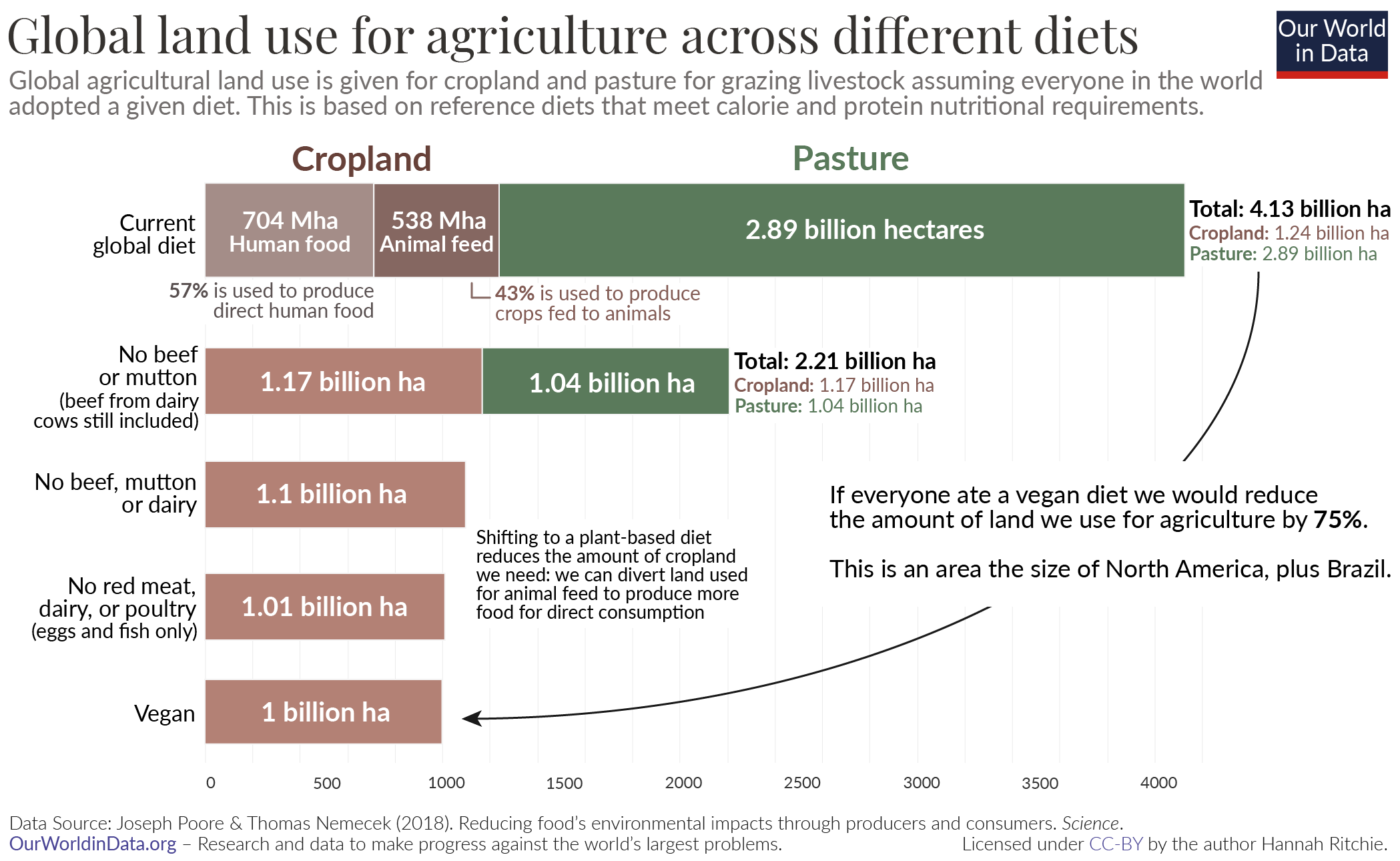Land used for ranching:
The cattle sector of the Brazilian Amazon, incentivized by the international beef and leather trades,[1] has been responsible for about 80% of all deforestation in the region,[2][3] or about 14% of the world's total annual deforestation, making it the world's largest single driver of deforestation.[4] The vast majority of agricultural activity resulting in deforestation was subsidized by government tax revenue.[5] By 1995, 70% of formerly forested land in the Amazon, and 91% of land deforested since 1970 had been converted to cattle ranching.[6][7]
https://en.wikipedia.org/wiki/Deforestation_of_the_Amazon_rainforestvs farming:
Half of the world’s habitable land is used for agriculture, with most of this used to raise livestock for dairy and meat. Livestock are fed from two sources – lands on which the animals graze and land on which feeding crops, such as soy and cereals, are grown. How much would our agricultural land use decline if the world adopted a plant-based diet?
Research suggests that if everyone shifted to a plant-based diet we would reduce global land use for agriculture by 75%. This large reduction of agricultural land use would be possible thanks to a reduction in land used for grazing and a smaller need for land to grow crops.
[...]
The land use of livestock is so large because it takes around 100 times as much land to produce a kilocalorie of beef or lamb versus plant-based alternatives. This is shown in the chart.1 The same is also true for protein – it takes almost 100 times as much land to produce a gram of protein from beef or lamb, versus peas or tofu.
Of course the type of land used to raise cows or sheep is not the same as cropland for cereals, potatoes or beans. Livestock can be raised on pasture grasslands, or on steep hills where it is not possible to grow crops. Two-thirds of pastures are unsuitable for growing crops.2
[...]
Less than half of the world’s cereals are fed directly to humans
[...]
Less than half – only 48% – of the world’s cereals are eaten by humans. 41% is used for animal feed, and 11% for biofuels.
[...]
In many countries, the share that is for human consumption is even smaller. We see this in the map. In most countries across Europe it’s less than one-third of cereal production is used for human consumption, and in the US only 10% is.7
https://ourworldindata.org/land-use-dietsBe sure to check the article to see the additional maps, which give plenty of evidence of how inferior Western civilization is.

(And think of how much _less_ land farming would use, if the population was at a sane level.)
Some recommendations in the article are problematic though. As it currently stands, the number of individual chickens slaughtered far, far exceeds cows. "Substituting" chickens for cows would add exponentially more cruelty to the world.
This is an important insight from this research: cutting out beef and dairy (by substituting chicken, eggs, fish or plant-based food) has a much larger impact than eliminating chicken or fish.